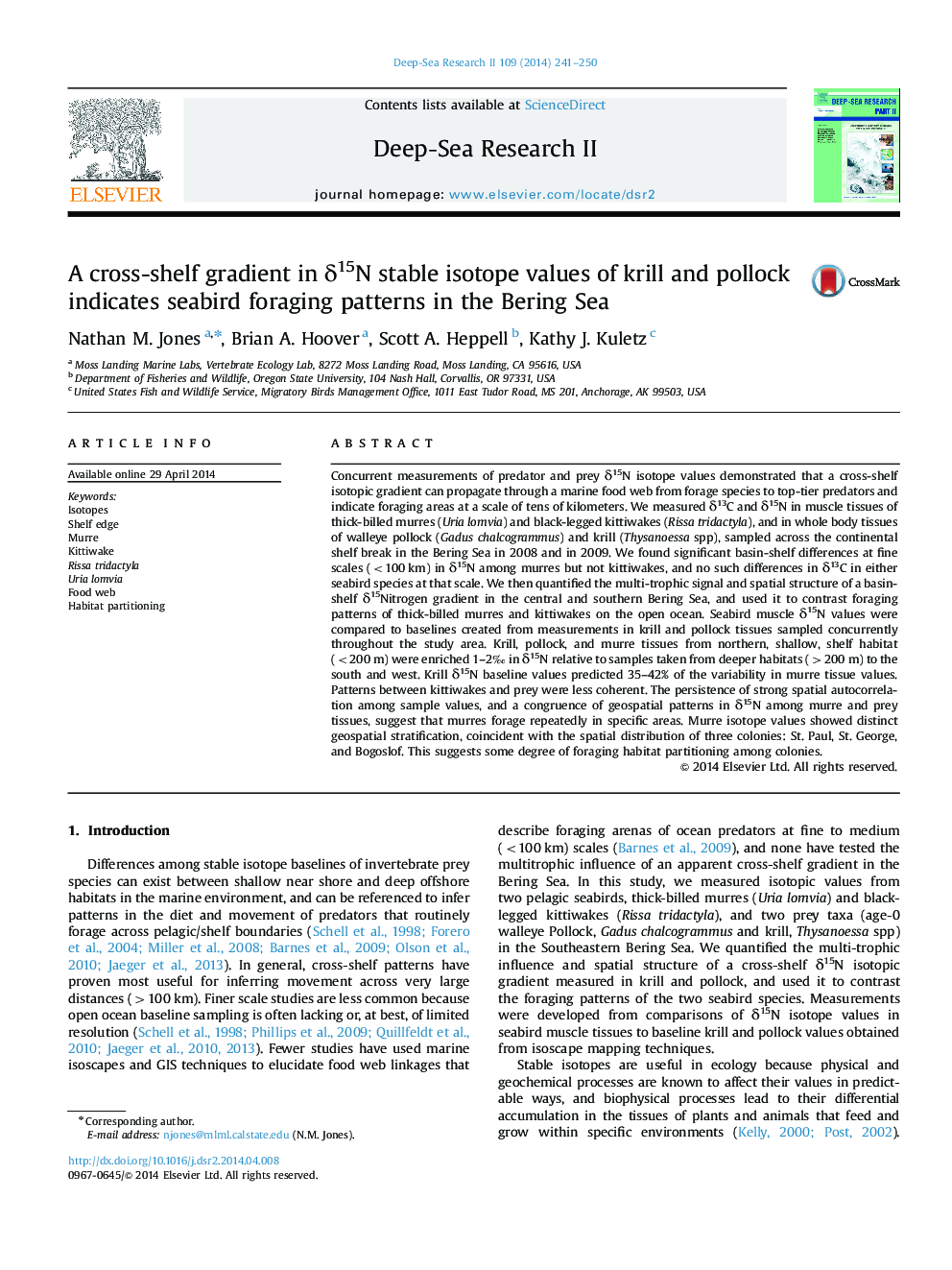| کد مقاله | کد نشریه | سال انتشار | مقاله انگلیسی | نسخه تمام متن |
|---|---|---|---|---|
| 6384187 | 1626431 | 2014 | 10 صفحه PDF | دانلود رایگان |

Concurrent measurements of predator and prey δ15N isotope values demonstrated that a cross-shelf isotopic gradient can propagate through a marine food web from forage species to top-tier predators and indicate foraging areas at a scale of tens of kilometers. We measured δ13C and δ15N in muscle tissues of thick-billed murres (Uria lomvia) and black-legged kittiwakes (Rissa tridactyla), and in whole body tissues of walleye pollock (Gadus chalcogrammus) and krill (Thysanoessa spp), sampled across the continental shelf break in the Bering Sea in 2008 and in 2009. We found significant basin-shelf differences at fine scales (<100 km) in δ15N among murres but not kittiwakes, and no such differences in δ13C in either seabird species at that scale. We then quantified the multi-trophic signal and spatial structure of a basin-shelf δ15Nitrogen gradient in the central and southern Bering Sea, and used it to contrast foraging patterns of thick-billed murres and kittiwakes on the open ocean. Seabird muscle δ15N values were compared to baselines created from measurements in krill and pollock tissues sampled concurrently throughout the study area. Krill, pollock, and murre tissues from northern, shallow, shelf habitat (<200 m) were enriched 1-2Ⱐin δ15N relative to samples taken from deeper habitats (>200 m) to the south and west. Krill δ15N baseline values predicted 35-42% of the variability in murre tissue values. Patterns between kittiwakes and prey were less coherent. The persistence of strong spatial autocorrelation among sample values, and a congruence of geospatial patterns in δ15N among murre and prey tissues, suggest that murres forage repeatedly in specific areas. Murre isotope values showed distinct geospatial stratification, coincident with the spatial distribution of three colonies: St. Paul, St. George, and Bogoslof. This suggests some degree of foraging habitat partitioning among colonies.
Journal: Deep Sea Research Part II: Topical Studies in Oceanography - Volume 109, November 2014, Pages 241-250